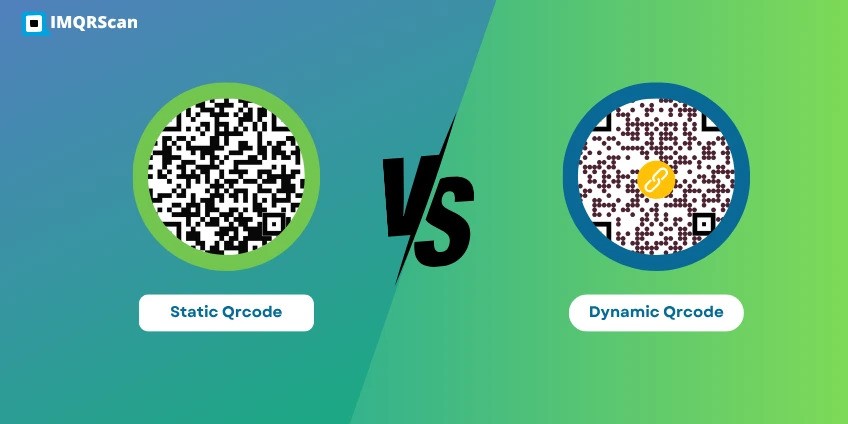QR codes have become a powerful tool for businesses, educators, event organizers, and everyday users. They simplify access to websites, contact info, digital menus, files, and more — all with a simple scan. But when creating a QR code, many people get confused by the two main types: IMQRSCAN Static and Dynamic QR codes.
Understanding the difference between static and dynamic QR codes is essential to avoid unexpected problems like expired links, uneditable content, or unnecessary subscription fees. In this article, we’ll explain what each type offers, how they work, and how to decide which one is right for your needs.
What Is a Static QR Code?
A static QR code stores the data directly in the QR image itself. Once created, the destination — whether it’s a website URL, text, contact info, or file link — cannot be changed. However, static codes are completely free to use and never expire, making them great for fixed information.
✅ Benefits of Static QR Codes:
- Free to generate
- No expiration or subscriptions required
- Ideal for permanent, unchanging content
- Can be used offline (for text or contacts)
📌 Best Use Cases:
- Restaurant menus
- Contact info on business cards
- Downloadable resources (PDFs, images)
- Classroom resources or assignments
- Printed posters or labels
What Is a Dynamic QR Code?
A dynamic QR code works differently. Instead of embedding the full destination, it contains a short URL that redirects to your actual link — which means you can edit or update the target at any time. Dynamic codes also offer tracking analytics, security options, and additional flexibility, making them ideal for marketing and time-sensitive campaigns.
✅ Benefits of Dynamic QR Codes:
- Editable destination even after printing
- Track scans, locations, devices, and time
- Password protection, expiration control, and redirect options
- More control and insights for marketers
📌 Best Use Cases:
- Marketing promotions
- Event schedules or tickets
- Product packaging with changing content
- Real-time updates to links
- A/B testing for campaigns
Static vs. Dynamic QR Code: Side-by-Side Comparison
| Feature | Static QR Code | Dynamic QR Code |
|---|---|---|
| Editability after creation | ❌ No | ✅ Yes |
| Tracking and analytics | ❌ Not available | ✅ Full analytics available |
| Cost | ✅ Free forever | 💲 Starts at $2.99/month (via IMQRScan) |
| Expiration risk | ❌ Never expires | ⚠ May expire without an active plan |
| Scan limit | Unlimited | Unlimited with active plan |
| Best for | Fixed content | Editable and trackable campaigns |
Why Choose IMQRSCAN?
Whether you need static or dynamic QR codes, IMQRScan offers a reliable, cost-effective solution. Here’s why users trust IMQRScan:
- Free static QR codes for lifetime use
- Dynamic QR codes starting at just $2.99/month
- Clean, customizable designs
- Easy-to-use interface with full control
- No hidden fees or sudden deactivations like many competitors
Perfect for startups, NGOs, teachers, marketers, and small businesses who want value and simplicity without compromising on features.
Conclusion: Which One Should You Use?
If you need a QR code for permanent, unchanging content and want a free, worry-free solution, go with a static QR code. But if your project involves ongoing changes, tracking, or time-based content, a dynamic QR code is well worth the small monthly cost.
No matter what you choose, IMQRScan provides both options — easy, affordable, and dependable.




